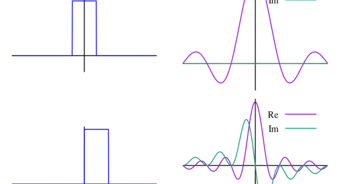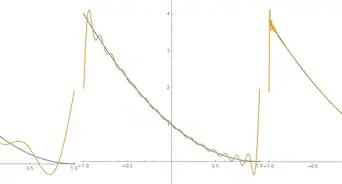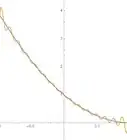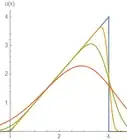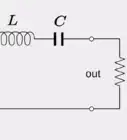X
wikiHow is a “wiki,” similar to Wikipedia, which means that many of our articles are co-written by multiple authors. To create this article, volunteer authors worked to edit and improve it over time.
This article has been viewed 23,368 times.
Learn more...
Poisson’s equation is an important partial differential equation that has broad applications in physics and engineering. This article will deal with electrostatic potentials, though the techniques outlined here can be applied in general.
One way to solve this equation is to perform Fourier transforms (FT) relating the variables both in position space and in the space. This converts the equation into an integration problem, which is relatively easier to deal with.
Steps
-
1Begin with Poisson’s equation. Recall that the electric field can be written in terms of a scalar potential We can then use Gauss’ law to obtain Poisson’s equation as seen in electrostatics.
- In this equation, it is often the case that we know the charge density called the source function, and wish to know the potential Therefore, we need to find some way to invert this equation.
-
2Write out the FTs and inverse FTs of the potential and charge density. Since we are dealing with three dimensions, the FTs are adjusted accordingly, with the constant factor there for normalization purposes. The bounds will differ depending on conventions on where to set the potential to 0. Although we will not explicitly write the boundaries until evaluating the integrals, we will set the potential to 0 at infinity, so that we are integrating over all space.Advertisement
-
3Relate with . The result will relate the potential and charge density in the space, and as it will turn out, the relation is algebraic, which is considerably simpler.
- Take the Laplacian of We can differentiate under the integral here because the integral is being taken with respect to and is an independent variable.
- FT charge density so that it is also written in the space.
- By direct comparison, we see that the below relation holds.
- If we were given charge density in the space and wanted to find potential in the same space, it would be very easy. However, we are interested in finding these quantities in the space. Therefore, we will need to transform a second time.
- Take the Laplacian of We can differentiate under the integral here because the integral is being taken with respect to and is an independent variable.
-
4Write in terms of . Inverse FT charge density and simplify the resulting expression. The prime symbols for the dummy variables in line 2 signify that we are taking a separate integral.
-
5Evaluate the space integral. It is easier if we change to spherical coordinates (we are using the physicist's convention). In line 5, we recognize that from Euler's formula, and in line 7, we recognize the integral
-
6Substitute into the equation of the potential . This is the general solution to Poisson's equation up to a charge density, where The general solution to this equation cannot be written in closed form. Thus, we opt for the integral form, where we integrate the known charge density over all space to find the corresponding potential, though the integration for more complicated charge distributions becomes rather impractical.
Advertisement
About This Article
Advertisement


















![{\begin{aligned}\phi ({\mathbf {x}})&={\frac {1}{(2\pi )^{{3/2}}}}\int e^{{i{\mathbf {k}}\cdot {\mathbf {x}}}}{\frac {{\tilde {\rho }}({\mathbf {k}})}{k^{{2}}\epsilon _{{0}}}}{\mathrm {d}}^{{3}}{\mathbf {k}}\\&={\frac {1}{(2\pi )^{{3/2}}}}\int e^{{i{\mathbf {k}}\cdot {\mathbf {x}}}}{\frac {{\mathrm {d}}^{{3}}{\mathbf {k}}}{k^{{2}}\epsilon _{{0}}}}\left[{\frac {1}{(2\pi )^{{3/2}}}}\int e^{{-i{\mathbf {k}}\cdot {\mathbf {x}}^{{\prime }}}}\rho ({\mathbf {x}}^{{\prime }}){\mathrm {d}}^{{3}}{\mathbf {x}}^{{\prime }}\right]\\&={\frac {1}{(2\pi )^{{3}}}}\int {\frac {e^{{i{\mathbf {k}}\cdot ({\mathbf {x}}-{\mathbf {x}}^{{\prime }})}}}{k^{{2}}}}{\mathrm {d}}^{{3}}{\mathbf {k}}\int {\frac {\rho ({\mathbf {x}}^{{\prime }})}{\epsilon _{{0}}}}{\mathrm {d}}^{{3}}{\mathbf {x}}^{{\prime }}\end{aligned}}](./images/2046697501-6014c3f2ed0aadb160de3db26cf8e37b40344b6b.webp)





